Mastering Large Pimples: Effective Treatment Strategies
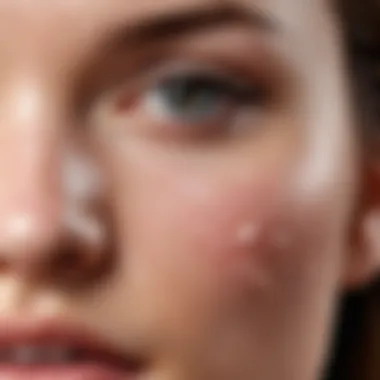
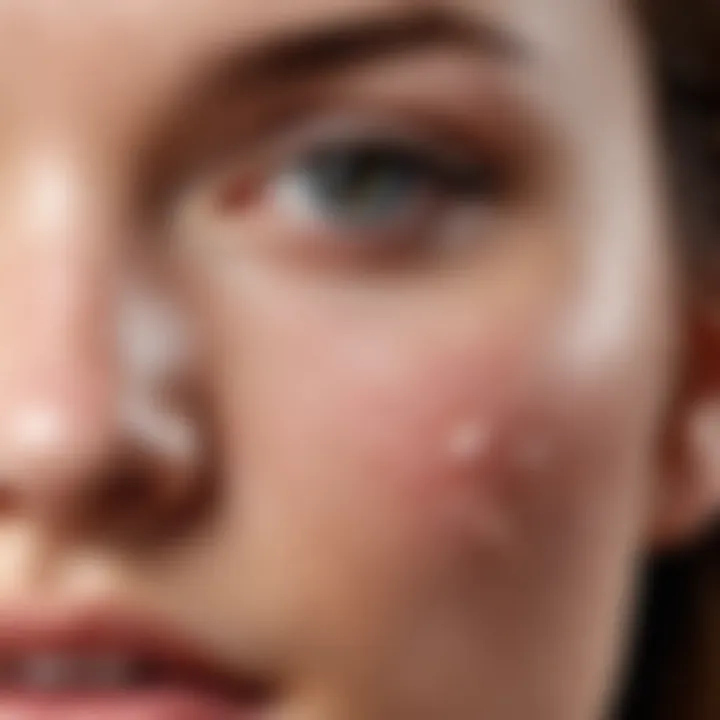
Intro
Large pimples, sometimes referred to as big zits, can significantly affect a person's self-esteem and overall skin health. Understanding the management of these large acne lesions is crucial for maintaining clear skin. This article explores effective strategies, home remedies, and professional treatments that one can use to combat large pimples while also delving into preventive measures and suitable skincare routines.
The causes of large pimples often stem from various factors, including hormonal fluctuations, stress levels, and genetics. Properly addressing these factors can alleviate the severity and occurrence of breakouts. Throughout this guide, readers will gain not only the knowledge necessary for treating existing acne but also insights into preventing future outbreaks.
Product Overview
Product Preface
Large pimples require effective solutions to calm inflammation and promote healing. Numerous skincare products are designed specifically to target these issues. Knowledge of the right products can enhance an individual's routine and contribute to clearer skin.
Product Features
When selecting products to manage large pimples, it is important to look for specific features:
- Salicylic Acid: Helps unclog pores and reduce swelling.
- Benzoyl Peroxide: Eliminates bacteria and reduces inflammation.
- Non-comedogenic Formulations: Prevents further clogging of pores.
- Soothing Ingredients: Such as aloe vera and chamomile can help reduce redness and irritation.
Skincare Tips
Natural Remedies
In addition to over-the-counter solutions, natural remedies can effectively address large pimples. Some popular options include:
- Tea Tree Oil: Known for its antimicrobial properties.
- Honey: A natural antibacterial agent that promotes healing.
- Aspirin Paste: Contains salicylic acid, which can reduce inflammation when applied topically.
Healthy Eating and Skin Health
Diet is closely linked to skin health. Adopting a healthy eating plan can have a positive impact on skin conditions. Key dietary strategies may include:
- Consuming Omega-3 Fatty Acids: Found in fish and flaxseeds, these can reduce inflammation.
- Staying Hydrated: Drinking sufficient water helps maintain skin elasticity.
- Incorporating Antioxidant-rich Foods: Fruits and vegetables support skin repair and overall health.
"Prevention is key. A consistent skincare routine combined with adequate nutrition can minimize the appearance of large pimples and prevent future breakouts."
This article will provide a comprehensive understanding of how to effectively manage large pimples. It will detail treatment options, preventive measures, and the importance of skincare routines.
Prelude to Large Pimples
Understanding large pimples is essential for effective skin care. This article aims to inform and guide readers through the complexities of managing these prominent skin issues. In today’s beauty culture, skin health is a subject of great interest. Large pimples are not merely an aesthetic problem; they can impact self-esteem and cause distress. By recognizing their characteristics, causes, and treatment options, individuals can take proactive steps toward healthier skin.
Definition and Characteristics
Large pimples, often referred to as cystic acne or big zits, are significantly different from regular acne spots. They are usually deeper and larger, often filled with pus. Physically, they may appear red, inflamed, and swollen. These characteristics can lead to discomfort, pain, and in some cases, scarring if not treated properly. The texture is often firm to the touch, indicating that the infection is situated below the skin surface. Unlike smaller pimples, large pimples may take longer to heal and can persist for days or even weeks.
Common Causes of Large Pimples
Several factors can contribute to the emergence of large pimples. Understanding these causes is vital for developing effective prevention and treatment strategies.
- Hormonal Changes: Fluctuations in hormones, particularly during puberty, menstruation, or hormonal treatments, can trigger excessive oil production.
- Excess Oil Production: Overactive sebaceous glands lead to an increased accumulation of sebum, which can clog pores and lead to breakouts.
- Bacteria: The presence of Propionibacterium acnes, a bacterium that thrives in clogged pores, exacerbates inflammation.
- Stress: Higher stress levels can lead to hormonal imbalances, promoting the outbreak of large pimples.
- Diet: Certain foods, particularly those high in sugar and refined carbs, can contribute to breakouts by increasing inflammation levels.
"Understanding the causes of large pimples can empower individuals to address their skin problems more effectively."
Recognizing these factors is the first step in managing and treating large pimples. Individuals must consider their unique skin type and lifestyle when developing a customized skincare plan. Effective strategies can dramatically reduce the frequency and severity of large pimples.
Understanding Acne Formation
Understanding the formation of acne is essential to managing large pimples effectively. Knowledge of how acne develops can enable better prevention and treatment strategies. It involves recognizing the biological processes that contribute to acne, which is critical for both personal care and seeking professional help. By understanding these underlying causes, individuals can take informed steps towards healthier skin.
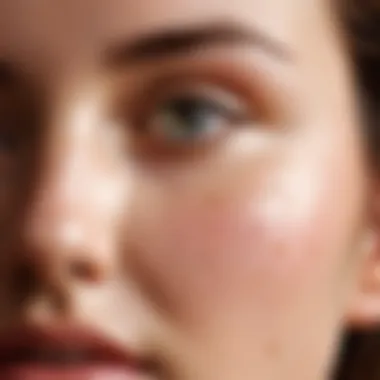

The Role of Oil and Bacteria
Large pimples, or zits, emerge primarily due to an overproduction of sebum, a natural oil produced by sebaceous glands in the skin. Usually, this oil plays a protective role; however, excess production can lead to clogged pores. When these pores become blocked, they create an environment conducive to the growth of bacteria like Propionibacterium acnes. This bacterium is often harmless on healthy skin, but when it proliferates in a clogged pore, it can cause inflammation and lead to the development of large, painful pimples.
Using products that contain ingredients to manage excess oil and target bacteria is crucial in treating breakouts. For instance, over-the-counter treatments with benzoyl peroxide or salicylic acid can help reduce oiliness and fight bacterial growth. Regular cleansing of the skin also helps remove accumulated oils and dead skin cells, minimizing the chances of pore blockage.
Hormonal Influence on Acne
Hormones play a significant role in acne formation. Changes in hormone levels, such as those occurring during puberty, menstruation, or hormonal imbalances, can lead to an increase in oil production. For instance, androgens, a group of hormones, can amplify the activity of sebaceous glands, pushing them to produce more sebum than normal. This condition can be particularly pronounced in women experiencing menstrual cycles or those with polycystic ovary syndrome.
The understanding of these hormonal influences is crucial because it helps in tailoring treatment. In certain cases, hormonal treatments like oral contraceptives can regulate hormonal imbalances and help reduce acne flare-ups. Therefore, recognizing the connection between hormones and acne can empower individuals to seek the right treatments and lifestyle adjustments to manage their skin health better.
Preventive Measures
Preventive measures play a critical role in managing large pimples effectively. Understanding how to prevent breakouts can significantly enhance skin health and reduce the frequency of acne occurrences. When vibrant skin is a priority, taking proactive steps creates a solid foundation for good skin. These measures not only aim to avoid future breakouts but also aid in maintaining overall skin wellness. Simple adjustments in daily habits and lifestyle choices can have a notable effect on skin quality, emphasizing the relevance of this topic within the broader scope of acne management.
Daily Skincare Routine
A daily skincare routine is essential for maintaining clear skin. By adopting a consistent routine, individuals can address various skin issues before they escalate. This routine should incorporate fundamental steps like cleansing, moisturizing, and sunscreen application for optimal results.
Cleansing Guidelines
Cleansing is the backbone of any skincare routine. It helps remove dirt, oil, and makeup from the skin's surface. The key characteristic of cleansing guidelines is the recommendation to use a gentle cleanser suitable for your skin type. A non-comedogenic product is usually a beneficial choice, reducing the likelihood of clogged pores. A unique feature of effective cleansing is the emphasis on using lukewarm water, as hot water can strip the skin of its natural oils, leading to increased oil production. While the daily application of a good cleanser presents numerous advantages, individuals should be cautious not to over-cleanse, as it may irritate the skin, causing more harm than benefit.
Moisturizing Effectively
Moisturizing effectively is another vital component in a skincare regimen. The main goal of moisturizer is to hydrate the skin, maintaining its elasticity and barrier function. A characteristic trait of a good moisturizer is its ability to balance oil production without feeling heavy on the skin. Choosing a lightweight, oil-free moisturizer is a popular choice, particularly for those prone to acne. The unique feature here is how modern moisturizers often include additional beneficial ingredients such as hyaluronic acid or glycerin that enhance hydration. The advantages are significant, as they keep the skin hydrated without exacerbating acne. However, individuals with more oily skin should be attentive and avoid overly rich creams that may cause breakouts.
Sunscreen Importance
Applying sunscreen is paramount in preventing skin damage caused by sun exposure. The essential aspect of sunscreen is its protection against harmful UV rays, which can lead to skin discoloration and premature aging. A broad-spectrum sunscreen is particularly beneficial, guarding against both UVA and UVB rays. The unique feature of modern sunscreens includes formulations that incorporate skincare benefits, making them suitable for daily use. Regular application can prevent dark spots and improve overall skin health. However, one disadvantage is the potential for some formulations to clog pores, which is vital to consider when selecting the right product for acne-prone skin.
Dietary Considerations
Diet holds significant sway over skin health. Identifying how certain foods impact acne formation is essential for developing a holistic approach to skin management. A thoughtful diet can complement skincare routines, resulting in clearer skin and fewer breakouts.
Foods That May Trigger Breakouts
Certain foods can exacerbate acne issues. The aspect of foods triggering breakouts highlights the need for awareness regarding dietary choices. A high glycemic index diet, rich in sugar and refined carbs, is often linked to increased acne severity. Key characteristics of these trigger foods include their rapid digestion and ability to spike insulin levels, which may increase oil production. Foods such as white bread, chips, and sugary treats are examples. The unique feature of this area is the individual variability; not everyone reacts the same way. Hence, keeping a food diary may help identify personal food triggers, allowing effective dietary adjustments to support better skin health.
Hydration and Skin Health
Hydration directly influences skin health. Adequate water intake is crucial for maintaining skin moisture and elasticity. The key characteristic of hydration is its role in supporting overall skin functions. Increased water consumption helps transport nutrients to skin cells, resulting in a healthier appearance. Unique features include how hydration improves skin cell turnover and enhances the body’s ability to repair itself. While the advantages are well-documented, some may find it easy to overlook proper hydration in their day-to-day lives. Making water your primary beverage can aid in improving skin condition.
Keeping a consistent skincare routine and a mindful diet can significantly reduce the occurrence of large pimples.
Over-the-Counter Treatments
Over-the-counter treatments are essential components in the battle against large pimples. They offer accessible and effective solutions for individuals who seek to manage acne without the need for prescription medications. These products are formulated with active ingredients that target the underlying causes of acne, such as excess oil and bacteria. The convenience of obtaining these treatments without medical advice makes them an attractive option for many.
The benefits of over-the-counter treatments include their immediate availability and the variety of options available for different skin types. These treatments can be used as sole therapies or in combination with other skincare routines for enhanced effectiveness. However, it is essential to approach these products thoughtfully, taking into account individual skin sensitivities and the possibility of side effects.
Benzoyl Peroxide Products
Benzoyl peroxide is a popular active ingredient widely recognized for its antibacterial properties. It works by reducing the presence of bacteria that cause acne and by helping to unclog pores. Products containing benzoyl peroxide are available in various concentrations, usually ranging from 2.5% to 10%.
When using benzoyl peroxide treatments, start with a lower concentration to minimize irritation. Over time, the skin may build tolerance, allowing the use of higher concentrations if necessary. Regular application can lead to noticeable improvements in acne, making it a staple in many acne treatment regimens.
Salicylic Acid Applications
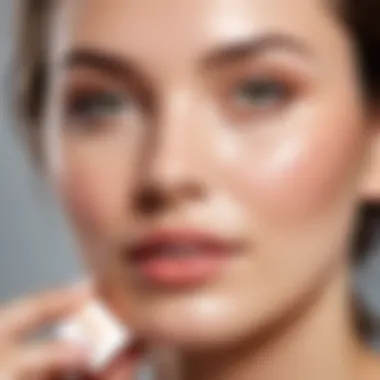
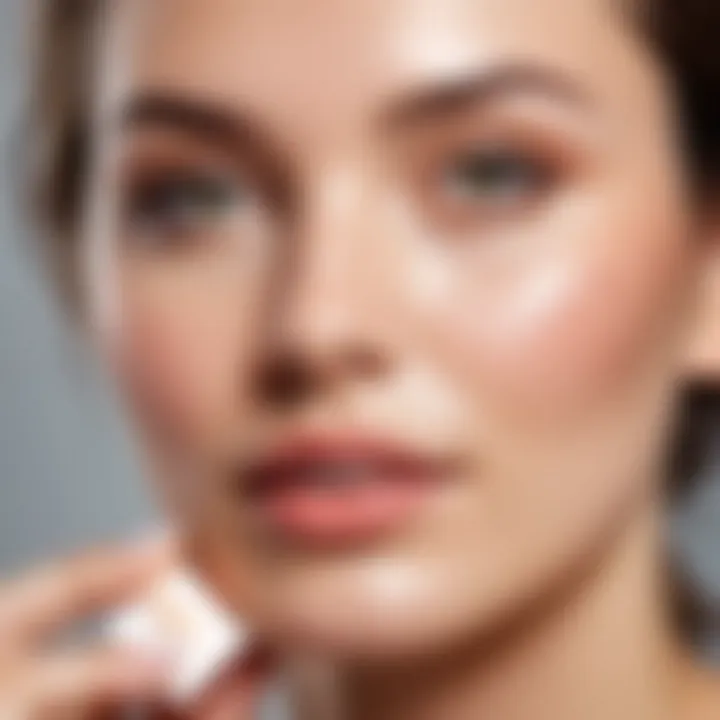
Salicylic acid is another key player in over-the-counter acne treatments. Known for its exfoliating properties, salicylic acid penetrates the pores and helps to dissolve dead skin cells. This action prevents the clogging of pores, which can lead to the formation of large pimples.
Salicylic acid is typically available in concentrations between 0.5% and 2%. When selecting a product, consider your skin type and sensitivity. Consistent use can promote clearer skin, but excessive application may result in dryness or irritation. Integrating salicylic acid into a skincare routine can yield positive results when used correctly.
Topical Retinoids
Topical retinoids, derived from vitamin A, are effective over-the-counter treatments that help to promote cell turnover and reduce the formation of new pimples. They work by accelerating the shedding of dead skin cells and preventing clogged pores. Popular options include adapalene gel and retinol-based creams.
Using topical retinoids can improve skin texture and clarity. For best results, apply a small amount to affected areas after cleansing. It is also important to use sunscreen during the day, as retinoids can increase skin sensitivity to sunlight. Gradual incorporation into your skincare routine can help ease potential irritation.
"Always patch-test new products to ensure that they do not cause any adverse reactions. This simple step can save time and discomfort in your acne treatment journey."
Home Remedies
Home remedies offer a natural approach for managing large pimples. They serve as accessible and affordable options for those who prefer to use what they have at home rather than seek commercial treatments. Many individuals find that these remedies can be effective in reducing inflammation and promoting healing while minimizing side effects often associated with topical medications.
Using home remedies allows for a personalized skincare routine, enabling individuals to experiment with different ingredients based on their skin type and sensitivity. Just as with any treatment, it is essential to consider the skin's unique needs. Some natural ingredients may cause irritation or allergic reactions in some individuals. Thus, conducting a patch test before full application is advisable.
Tea Tree Oil as a Treatment
Tea tree oil is well-known for its antibacterial properties. It can be effective in treating large pimples due to its ability to target the bacteria that cause acne. It contains compounds like terpinen-4-ol, which inhibit the growth of bacteria and reduce inflammation. To use, dilute tea tree oil with a carrier oil, such as coconut or jojoba oil. Apply it directly to the affected area using a cotton swab.
However, it is important to note that tea tree oil may not work for everyone, and some people may experience drying of the skin. This should be taken into account, and if irritation occurs, discontinue use. Regular application may show visible results, but consistency is key.
Aloe Vera Benefits
Aloe vera is another effective home remedy for large pimples. This plant is known for its soothing properties, which can help calm inflamed skin. Aloe vera gel contains antioxidants, enzymes, and vitamins that promote skin healing. It hydrates the skin while preventing excess oil accumulation.
To use aloe vera, extract the gel from the leaves of the plant and apply it to the affected areas. Leave it on for a few hours or overnight for best results. Aloe vera is generally safe for most skin types and rarely causes irritation, making it a great option for frequent use.
Honey's Effects on Acne
Honey is not just a sweetener; it has many beneficial properties for skin health. It is known for its antibacterial and anti-inflammatory effects. Honey can help reduce redness and swelling associated with large pimples. It also acts as a natural humectant, attracting moisture into the skin.
To use honey, apply a thin layer directly on the pimple and leave it on for about 30 minutes. Rinse off with lukewarm water. Honey can be used several times a week. Particularly for those with sensitive skin, it offers a gentle alternative without harsh chemicals.
In summary, natural home remedies can be a valuable addition to an individual's approach to managing large pimples. Ingredients like tea tree oil, aloe vera, and honey provide unique benefits and options for personal care.
Using these remedies thoughtfully can lead to improved skin health and a decreased likelihood of future breakouts.
Professional Treatments
Professional treatments play a crucial role in managing large pimples effectively. These treatments tend to offer more immediate and potent solutions than over-the-counter products. When persistent acne affects a person’s confidence or skin health, seeking professional help can provide valuable insight and tailored strategies. Dermatologists can evaluate the severity of the condition and suggest personalized plans, making professional treatments a critical component of effective acne management.
Consulting a Dermatologist
Consulting a dermatologist should be one of the first steps for anyone dealing with large pimples. A dermatologist possesses expertise in skin conditions and can perform detailed assessments to understand the specific type of acne. This professional can also determine if there are underlying health issues contributing to the acne, such as hormonal imbalances.
The benefits of consulting a dermatologist include access to specialized knowledge and potential treatments that are not available over-the-counter. For example, a dermatologist can suggest stronger topical or oral medications that target acne effectively. Regular consultations may also help adjust treatment plans based on how the skin responds, ensuring optimal results.
Prescription Medications
Prescription medications can significantly improve the appearance of large pimples. These options are often more effective than standard products, especially when acne is severe.
Antibiotics
Antibiotics are commonly prescribed as a part of acne treatment. They work by reducing bacteria on the skin, thus decreasing inflammation and the potential for new pimples. Among their key characteristics, antibiotics such as doxycycline or minocycline are favored due to their effectiveness in controlling serious cases of acne. They are often a popular choice because they can help clear up skin quickly, offering visible results in a matter of weeks.
However, there are some unique features and considerations associated with antibiotics. Long-term use can lead to antibiotic resistance, which is a concern that both patients and doctors must consider. The advantages include rapid skin improvement, but potential disadvantages could involve side effects like stomach upset or allergic reactions.
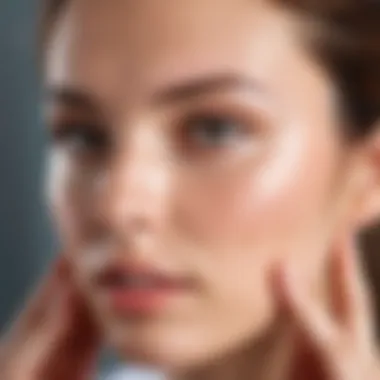
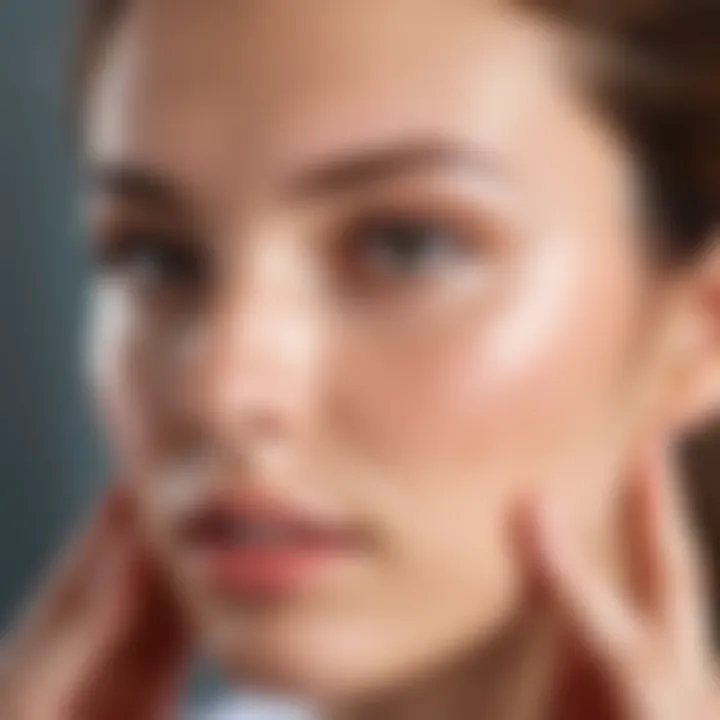
Oral Contraceptives
Oral contraceptives are another option often used to treat large pimples, especially in women. Their primary benefit lies in their ability to regulate hormones that can trigger breakouts. By stabilizing hormonal fluctuations, oral contraceptives can minimize acne significantly.
The key characteristic of oral contraceptives in this context is their hormonal balancing effect. They are beneficial for many women experiencing hormonal acne tied to menstrual cycles. However, it's important to recognize some unique features; not all oral contraceptives are effective for acne, and some may even worsen it for particular individuals. Potential advantages include not only acne reduction but also additional benefits like lighter periods. The disadvantages may include side effects like weight gain or cardiovascular risks.
In-Office Procedures
In-office procedures can provide advanced solutions for managing large pimples. These treatments are often faster and can tackle severe forms of acne that do not respond to regular medications.
Chemical Peels
Chemical peels are a common in-office procedure aimed at improving skin texture. They involve applying a chemical solution to the skin to exfoliate and remove dead skin cells. One key characteristic of chemical peels is their ability to promote skin renewal, leading to reduced scarring and fewer breakouts over time. This makes them a beneficial choice for individuals dealing with large pimples.
The unique feature of chemical peels is their varying strengths. Mild peels may merely enhance skin appearance, while stronger peels can treat more significant issues. While effective, some disadvantages include redness and peeling after the treatment, which can take time to resolve.
Laser Therapy
Laser therapy offers another advanced option for those struggling with large pimples. This treatment uses focused light to penetrate deep into the skin, targeting acne-causing bacteria and reducing inflammation. A key characteristic is its precision, allowing for targeted treatment without damaging surrounding skin.
Laser therapy is beneficial because it can yield quick results, often after just a few sessions. The unique feature of this treatment is its minimally invasive nature, leading to little to no downtime for the patient. However, it may not be suitable for everyone, and potential disadvantages can include costs and reactions to the laser.
Professional treatments often lead to more effective solutions than home remedies or over-the-counter products, making them vital for managing large pimples.
The Psychological Impact of Pimples
Managing large pimples is not solely a physical challenge; it also comes with significant psychological implications. The way individuals perceive their skin can influence their self-esteem and social interactions. Breakouts can lead to feelings of embarrassment and anxiety, prompting people to avoid social situations or feel self-conscious. This section will delve into the emotional aspects associated with acne and provide insight on effective coping mechanisms.
Self-Esteem Issues
Large pimples can greatly affect self-esteem. When an individual experiences breakouts, the skin’s appearance becomes a focal point of concern. This can trigger negative thoughts about one’s attractiveness and worth. Studies indicate that people with visible acne may feel less confident in work and social settings.
The effect of these skin conditions goes beyond superficial appearance. People might internalize the stigma associated with having acne, leading to feelings of inferiority or shame. Many individuals report avoiding eye contact or feeling hesitant to engage in conversations due to their skin issues. This psychological burden can also elevate stress levels, creating a cycle that may exacerbate acne conditions.
Experts suggest that discussing these feelings can significantly help. Support groups or counseling can provide a safe space to share experiences and feelings. It is essential to recognize that others may have similar challenges. Also, understanding that beauty norms are constantly changing can help create a more realistic self-image.
"Self-acceptance is pivotal. Everyone has flaws, and acne does not define one’s value."
Coping Mechanisms
Adopting effective coping mechanisms is crucial for managing the emotional impact of large pimples. Here are several strategies that can be helpful:
- Mindfulness and Meditation: Practicing mindfulness can help ground oneself. It promotes a positive mindset and reduces anxiety about appearance.
- Positive Affirmations: Regularly affirming self-worth can counter negative thoughts. Statements like "I am more than my skin" can boost confidence.
- Seeking Professional Help: Engaging with a therapist can provide tools for managing self-esteem issues related to appearance. Cognitive behavioral therapy may be effective.
- Building a Supportive Network: Surrounding oneself with friends and family who uplift and encourage can ease the burden.
To cope effectively, it is essential to balance self-criticism with self-compassion. Recognizing that pimples are a common skin condition can alleviate the pressure. Moreover, focusing on overall health and wellness rather than just appearance promotes a healthier mindset, aiding emotional well-being.
End and Summary
The takeaway from this article emphasizes that effective skincare does not happen overnight. Persistence and consistency in using the right methods lead to improved outcomes over time. The holistic strategies discussed serve as a foundation for effective acne management, enabling readers to achieve healthier skin. Investing time and focus in building a personalized routine is vital.
Effective acne management is a journey that requires patience and understanding of one's unique skin needs.
Understanding this complexity helps individuals find the most beneficial treatments and preventive measures that align best with their individual needs.
Key Takeaways
- Large pimples are common, but they can be managed effectively with various strategies.
- A proper skincare routine is essential; it includes cleansing, moisturizing, and sun protection.
- Over-the-counter and home remedies can offer significant relief if used correctly.
- Professional help may be necessary when issues persist beyond self-care.
- The psychological effect of acne can be profound, making mental health support equally important.
- Regular follow-up with a dermatologist can help adjust treatment plans as needed.
Encouragement for Better Skin Care
It is crucial for everyone to understand that maintaining an effective skincare routine is a lifelong commitment. Clear skin is often the result of practicing good habits consistently. The strategies outlined in this article provide essential insights into managing large pimples. Emphasizing the importance of daily care cannot be overstated.
By incorporating dietary adjustments, using suitable products, and embracing healthy lifestyle choices, anyone can enhance their skincare efforts. Remember, changes won't happen overnight, but dedication will pave the way to clearer, healthier skin. Seek knowledge, stay informed, and adapt skincare practices as necessary. Don't hesitate to reach out for professional help when needed.
Developing a personalized skincare strategy will empower individuals to take charge of their skin health, ultimately leading to greater self-confidence and well-being.







